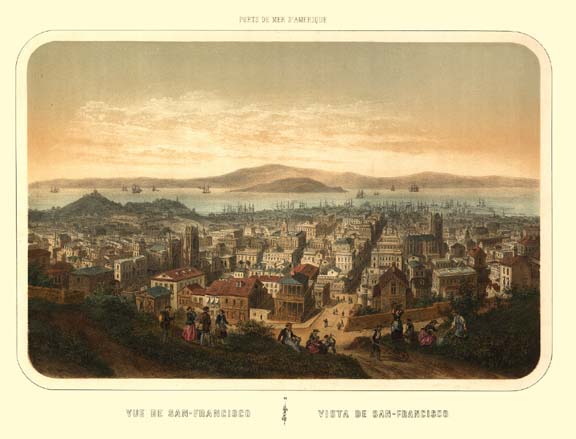As I was doing research for my Pinkerton Matchmaker books, the population of the western towns and cities peeked my interest. The Westward expansion began after the Louisiana Purchase in 1803. By Westward, they meant anything west of the Appalachian Mountains. That’s rather far east in our way of thinking today. For my research, I was more interested in the populating of the Western states as we know them now.
There was migration west of the Mississippi before the discovery of gold in California, but more occurred in the later half of the 19th century. Plus there was a rather large war in the 1860’s which slowed the growth of the West and took men from those territories and states.
In the Pinkerton Matchmaker series, the couples have cases they need to solve and most of them take place in the West. Being aware of the population of a real town or fictional one can make a difference in a story. I found US census lists of the largest cities in 1860, 1870, 1880, and 1890. Most, of course, are east of the Mississippi River. The highest percentage are east of the Appalachian Mountains.
New York City is, of course, the largest city in all the decades. The first city west of the Mississippi, if you can really call it west though the state is so I include it is New Orleans, LA. It’s number 6 in 1860, though it drops steadily ending in 12th place at the turn of the century. St. Louis, MO bounces around between 4 and 9 during the 5 decades.
San Francisco, CA begins 15th in 1860 and rises to 8 in the 1890s. To me this is the first true western city with a high population though it was only 56,802 in 1860. That makes sense with the gold rush of 1849. Only one other western city makes that first list in 1860; Sacramento, CA.
I was surprised when I read the top 100 of 1870. Coming in at #100 is the town where I grew up; Burlington, Iowa with 14,903 people. I was surprised until I remembered that Burlington was the hub of several railroad companies and a crossroads of many tracks heading west. CB&Q and Burlington Northern were both important railroads of the time. In Healing Love Cottonwood Series #1 the main character, Lydia changes trains in Burlington. A little nod to my heritage.
I was surprised to find only Kansas City, MO, St. Joseph, MO, and Leavenworth, KS the only additions to the more westerly cities. Sorry Minnestotans, I’m not counting St. Paul as it’s east of the river.
By 1880, there were eleven cities west of the Father of Waters. This time I’m counting the two MN cities. Denver finally makes the list at #50, with 35,629.
The count was up to 20 in 1890. Texas, Washington, Oregon, and Utah all finally made the list. 22 was the number on west of the Mississippi at the turn of the century.
To me it’s instructive to realize that it took 40 years for the states and territories to grow to have 22% of the largest cities in the continental USA. Most of the towns of the West were just that, towns, not cities, even those whose names are familiar to us; Deadwood, Laramie, Virginia City, Tombstone, Santa Fe, Dallas, Seattle, Denver, etc. Some have continued to grow and others have faded away, but each town, no matter how large or small, played its part in the growth of the American West.
An Agent for Rilla Pinkerton Matchmaker #29 is available in Kindle, KU and print on Amazon. Follow Rilla and Morgan as they solve the clues to find the stolen gold.





No comments:
Post a Comment